
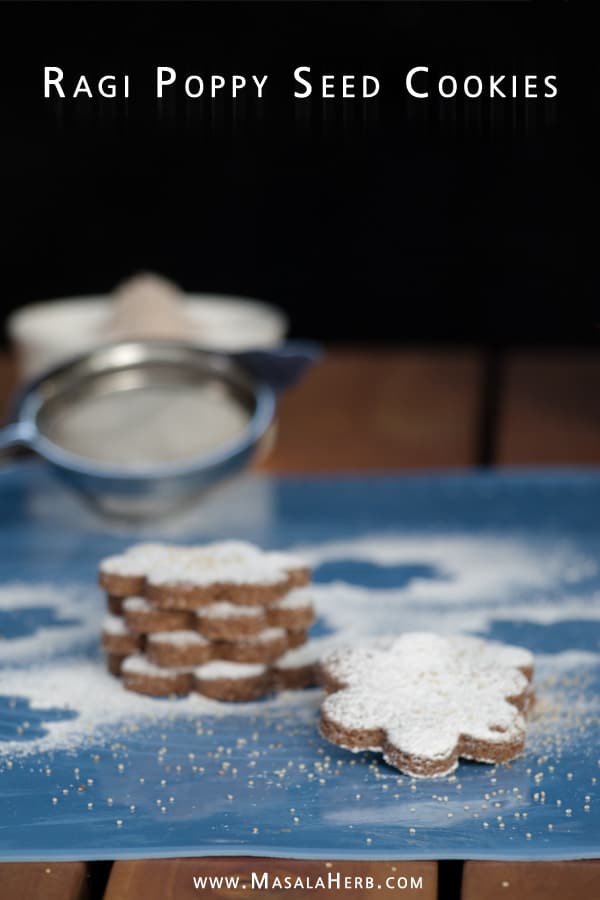

Global Food Recipes
with Spices and Herbs
Free E-Book available for a limited time. Grab yours now and get instantly inspired!
You missed out!
In the past few months I have been surrounded by ragi flour, it has been literally popping in into my life at different times.
Ragi cake on a friend's page, ragi roti made with love by my mother-in-law (flat bread), Ragi flour bags in my friendly neighborhood grocery store and so on.
Wherever I look, I can see ragi...
📕 What is ragi and ragi flour?
Ragi has been cultivated for thousands of years in the Indian Subcontinent.
In English the plant might be better known as Finger millet, however, since ragi is a much shorter and much more commonly used name in my surrounding, I personally prefer to call it simply ragi.
In Goa they also call it nachni besides ragi, in fact ragi is known under many different names.
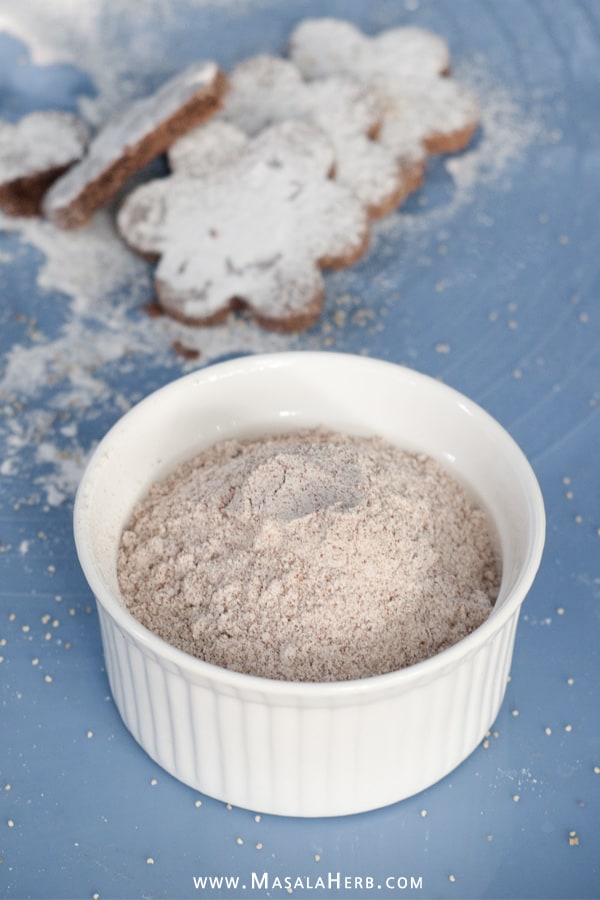
The grey "dark" ragi flour can be commonly bought in Goa and these days we even get to by organic ragi.
Yeah!
Although the use of finger millet is popular in South Asia and African highlands, the grain is barely known in the western world.
Ragi is very drought resistant, which means the seeds can lie dormant for a longer period, and once it rains ragi seeds come to life and the plant can be already harvested after 1 ½ months.
This super plant has another advantage: The seeds don't rot that easily during humid months and insects don't like it.
Basically, it means that instead of cultivating only commercial popular wheat variety all over the Indian subcontinent, a strong grain such as Ragi should be cultivated.
The Global Crop Diversity Trust described finger millet as a reliable food source in times of drought and crop failure.
It would solve the dilemma of so many suicidal farmers.
Finger millet production should be more common, not only because it grows well in the Indian subcontinent, but also because the grain itself is healthier, especially compared to wheat.
It's high in proteins and doctors often recommend mother's to feed their babies with ragi porridge.
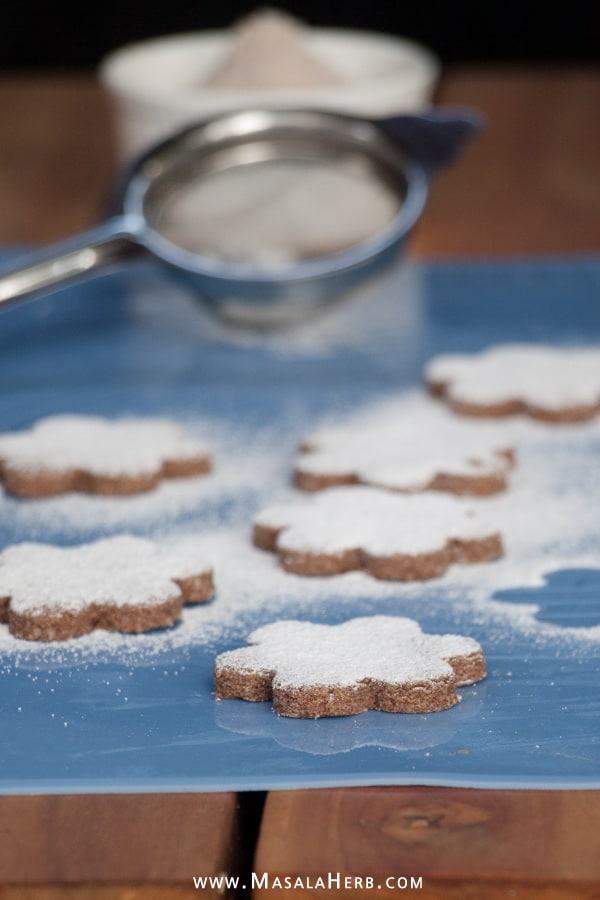
In general Ragi flour is a better choice if you care for your health.
I personally enjoy it but of course, I like to keep my food life balanced, I use and eat ragi from time to time.
Besides Ragi flatbreads, I like to transform ragi flour into nutritious shortbread cookies.
Commercially packed 5-grain cookies, better known as biscuits here around, frequently include ragi.
I figured I should try baking my own batch, developing my own recipe and that's what I did.
I combined two main ingredients together and created Ragi poppy seed cookies and they are Christmas material, my friends!
I wanted to make something different this year besides the traditional Vanillekipferl or Cinnamon stars to name a few.
I felt it was time to share Christmas cookies which could be made even if it wasn't Christmas.
A cookie, on the healthier side of life, easy and quick to prepare and with a very much misunderstood and underrated grain.
Make it, bake it and dust it with powdered sugar. 🙂
Do you know and like to use Ragi flour in your cooking?
📖 Recipe
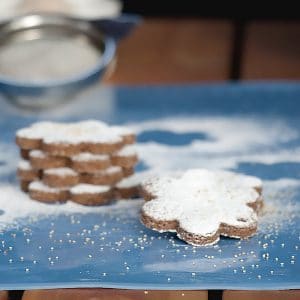
Finger Millet Poppy Seed Cookies
Ingredients
- 2½ Cup Finger Millet Flour
- 1 Cup Powdered Sugar
- Pinch Salt
- Pinch Baking Powder
- Vanilla Extract few drops
- 1 Stick Butter
- 1 Egg
- 4 Tablespoon Poppy Seed Paste
- Powdered Sugar optional
Instructions
- In a mixing bowl combine the finger millet flour, sugar, salt and baking powder. Make a well into the center and add the wet ingredients, vanilla essence, butter, egg and the poppy seed paste.
- Combine the crumbly mixture and work into a smooth dough ball. Cover in plastic wrap and place the dough into the fridge for at least 30 minutes to one hour. The dough is easier to handle and to roll out when cold.
- Before cutting out the cookie shapes, preheat the oven to 400° Fahrenheit/ 200° Celsius.
- Dust your working space with finger millet flour. Roll your dough out to a ½ centimeter thickness and cut out your cookie shapes. Place the raw cookies on a baking rack and bake for 10 mins at 400° Fahrenheit/ 200° Celsius.
- Let cool and enjoy or dust with powdered sugar.

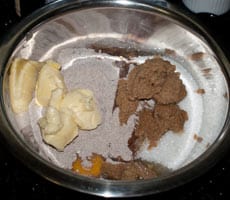
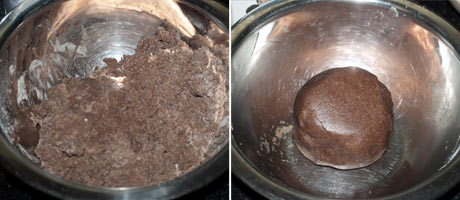

Have never heard of ragi flour/grain. I think the continued cultivation of ancient grains like this is so important, and to have one that is both drought resistant and doesn't rot with all of the rain you get in India is a real find. It certainly has a gorgeous color as a flour and I love that you used it in combination with the poppy seed paste. Bet this is a very different tasting cookie, different from what I'm use to (white flour, sugar and butter. :)).
More poppy seeds!! I've never heard of ragi but I want these cookies!
Another cookie to add to my growing list of cookies I must make this year. They look really yummy!
I hope I can find it here-it's completely new to me but I'm really intrigued by it!
I have never heard of ragi! However, I do have a rather large Indian supermarket quite nearby which I frequently visit so I must ask them if they have it! I love discovering new ingredients!!
Very good reasons to buy ragi flour...especially to make these yummy cookies! Merry Christmas, my friend! xo
Happy Holidays my friend! I think Santa might be getting these cookies this year 😉
Cheers
Choc Chip Uru
Great looking cookies! Perfect for the holidays. And speaking of which, Happy Holidays!
It has to be telepathy...Since 2-3 days have been thinking of incorporating more of grains in our diet and here i see these fantastic ragi cookies. Thanks for sharing 🙂
These cookies look absolutely wonderful....love the addition of poppy seeds paste in it. I could never have thought of trying out poppy seed paste with Ragi flour. Beautiful cookies!
Wonderful cookies! They must be very flavorful.
Cheers,
Rosa